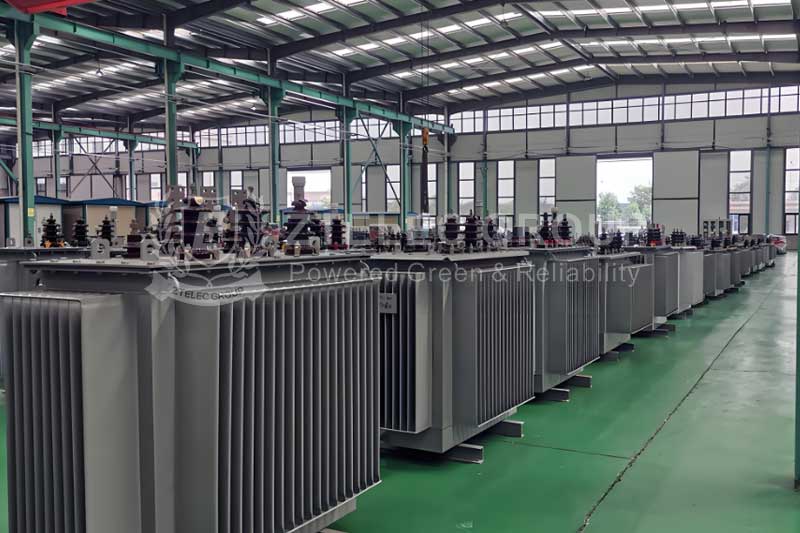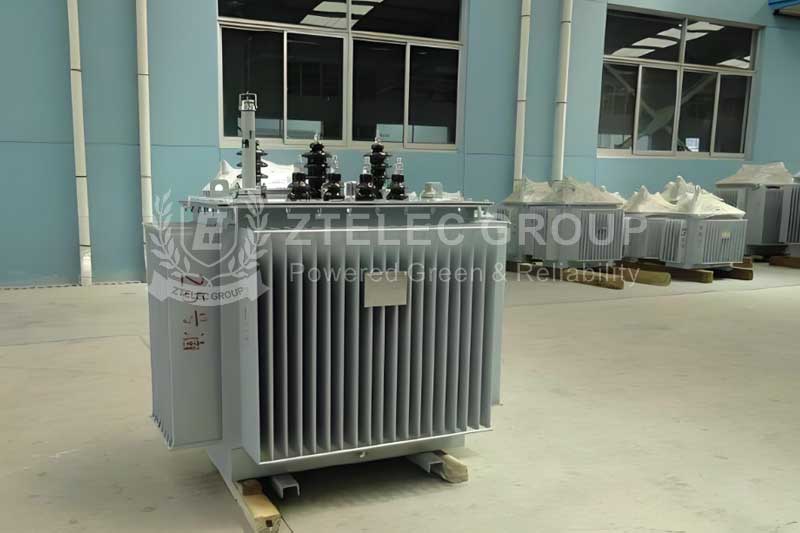What is the structure of the oil-immersed transformer?
Oil-immersed transformers are widely used in power systems, primarily for the purpose of increasing or decreasing voltage to achieve efficient power transmission. Compared to other types of transformers, oil-immersed transformers have excellent insulation and heat dissipation properties. Before delving into their structure, it is important to understand the working principles and application background of oil-immersed transformers, as this provides a foundation for subsequent structural analysis.

Oil-Immersed Transformers
I. Basic Components of Oil-Immersed Transformers
The basic structure of an oil-immersed transformer mainly consists of the following components: core, windings, insulating oil, casing, cooling system, and protective devices.
1. Core:
The core is the central part of the transformer, primarily used to provide a closed magnetic circuit for effective magnetic flux transmission. Generally, the core is made of laminated silicon steel sheets, treated to reduce eddy current losses and hysteresis losses. The design of the core is crucial for the efficiency of the transformer, as it directly affects the transformer’s leakage inductance and load capacity.
2. Windings:
The windings are made of conductive materials (usually copper or aluminum) and are divided into high-voltage and low-voltage windings based on the turns ratio. The number and arrangement of the windings directly influence the output characteristics and stability of the transformer. The windings are wrapped in insulating materials to prevent short circuits or leakage, ensuring safety.
3. Insulating Oil:
Insulating oil plays a vital role in oil-immersed transformers. It not only provides insulation but also effectively conducts heat, helping the transformer dissipate heat. The main component of insulating oil is mineral oil, which has good electrical insulation properties and thermal stability. Additionally, some antioxidants are added to the insulating oil to extend its service life and enhance the safety of the transformer.
4. Casing:
The casing serves as the protective structure of the transformer, typically made of steel. It protects the internal components from external environmental influences such as rain, dust, and impacts, and is responsible for maintaining the sealing of the oil. The design of the casing must balance strength and protective performance to ensure the reliability and durability of the transformer in various working environments.
5. Cooling System:
Oil-immersed transformers are usually equipped with a cooling system to help lower operating temperatures. The cooling system can be natural or forced, depending on the power and load requirements of the transformer. Natural cooling relies on the flow of oil, while forced cooling enhances heat dissipation through fans or water cooling systems, thereby improving the transformer’s load capacity and extending its service life.
6. Protective Devices:
Oil-immersed transformers are typically equipped with various protective devices to ensure safe and stable operation. These protective devices include temperature sensors, oil level monitors, and pressure relief valves. They can monitor the operating status of the transformer in real-time, issuing alarms and taking measures when abnormalities are detected. Additionally, the design should also consider preventing oil leaks and fire hazards.

II. Advantages of Oil-Immersed Transformers
Due to their unique structural design, oil-immersed transformers possess a range of advantages. Firstly, their excellent heat dissipation performance allows the transformer to maintain a lower operating temperature even under high load conditions, thereby improving its efficiency and reliability. Secondly, the use of insulating oil effectively reduces the insulation strength of the transformer, making it safer. Furthermore, because the materials used in their manufacturing are relatively common, oil-immersed transformers often have more competitive manufacturing costs compared to other types of transformers.
The structural design of oil-immersed transformers is reasonable and fully utilizes the functions of each component, achieving excellent operational performance. As important equipment for power transmission, their well-designed construction is significant for the stability and safe operation of power systems. With the advancement of technology, continuous innovations in materials and techniques for oil-immersed transformers have made them increasingly critical in modern power systems. Future research should focus more on how to further enhance their performance to meet the development needs of smart grids.
- more+releated article
- 2025-12-13How to Select and Use Phenolic Cloth-base Lami
- 2025-12-13How Much Does Bakelite Sheet Cost? 2025 Price
- 2025-12-13Why are most 3240 epoxy boards yellow?
- 2025-12-13What are the Main Applications of FR4 Epoxy Bo
- 2025-12-13Why Does the Price of Insulating Paperboard Va
- 2025-12-13Heat-Resistant DDP Insulation Paper
- 2025-12-13Comparison of Heat-Resistant DDP Insulating Pa
- 2025-12-13G10 and FR4 Epoxy Boards: Commonly Used for Ge
- 2025-12-13The Price of Heat-Resistant DDP Insulation Pap
- 2025-12-13How to Choose Epoxy Laminate Materials for Gen





